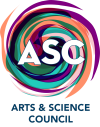Innovative Approach to Teaching History a Priority for ASC Cato Teaching Award Recipient Greg Lekavich

BY DASIA HOOD
When discussing the Great Depression, Gaston Day School history teacher Greg Lekavich uses a striking image of four men suspended by cables on the outskirts of the Hoover Dam.
The visual does two things: It prompts students to think critically and engage with the material from the outset; and, when combined with a teaching strategy that includes creating thesis statements and integrating terminology from the textbook, it helps students grasp that even seemingly disparate evidence can contribute to a broader historical narrative.
“What we’re trying to do is help the students understand that it’s all connected,” Lekavich said. The goal is to train students to think like public policymakers, who must consider multiple perspectives and evidence.
His innovative approach to teaching history is one of the reasons Lekavich was named a 2024 ASC Cato Excellence in Teaching Award recipient. The award, which comes with $1,500 and an original artwork, recognizes teachers who demonstrate exceptional creativity in infusing arts, science, or history into the core curriculum.
Lekavich said one of the challenges in teaching history is encouraging students to appreciate the nuance and depth of historical study. Many students need help understanding that history is not just a series of isolated events but a complex interplay of factors and patterns.
For instance, over a 65-minute class, students might identify small patterns. Still, genuine moments of historical discovery—where students see broader patterns or shifts, such as the correlation between wars and economic expansion in the U.S. between 1800 and 1860—often emerge only after substantial time and study.
Over the past three years, Lekavich has provided students with access to high-quality sources and literature. With the help of the CATO award money, he’s planning to build a classroom library that includes works by leading historians, offering students resources they wouldn’t find locally.
“The problem is we’ve suffered through all of these technology fads. Kids having more tools is positive, but they have to consume good information. A lot of that comes from reading books.”

